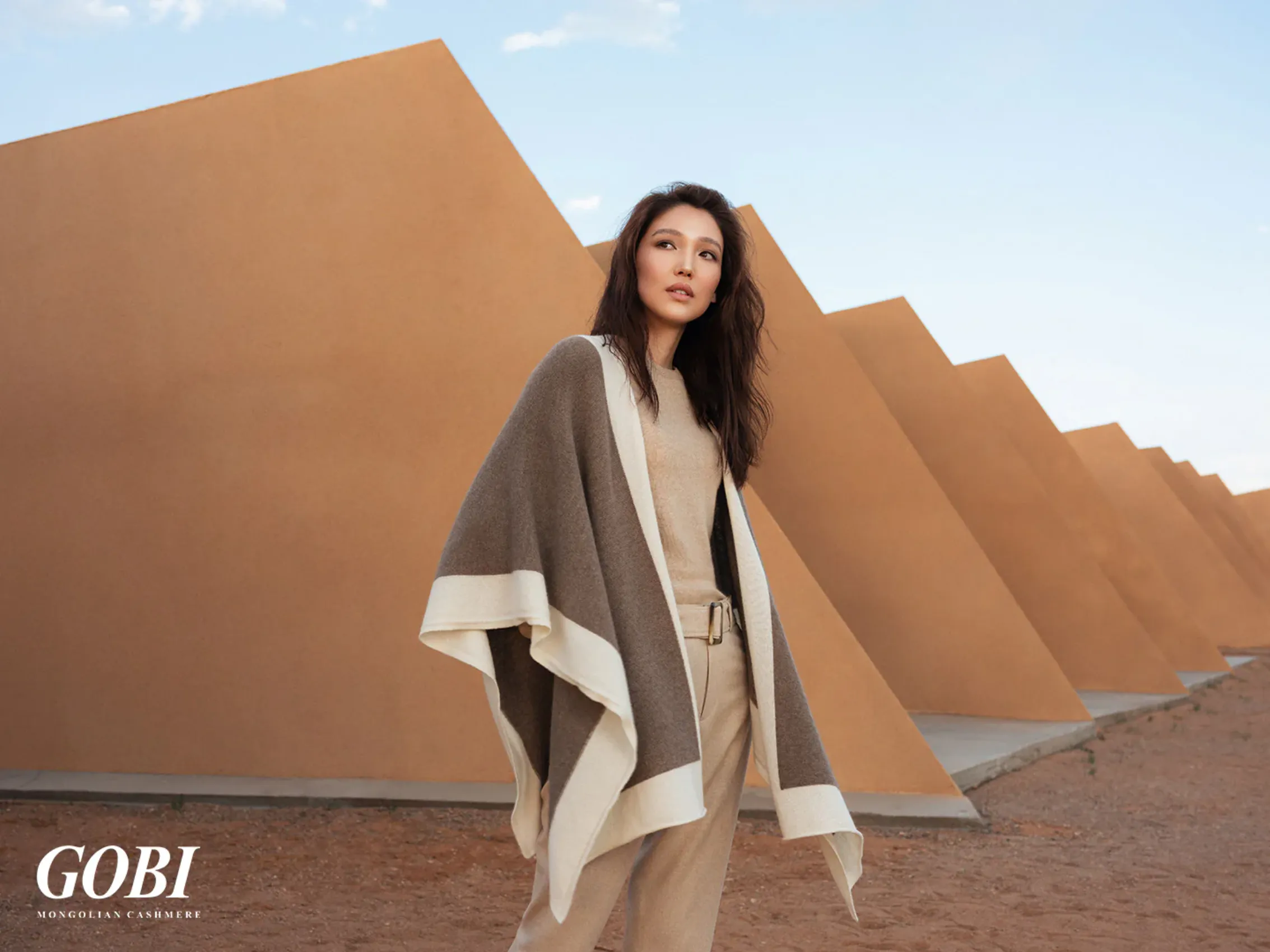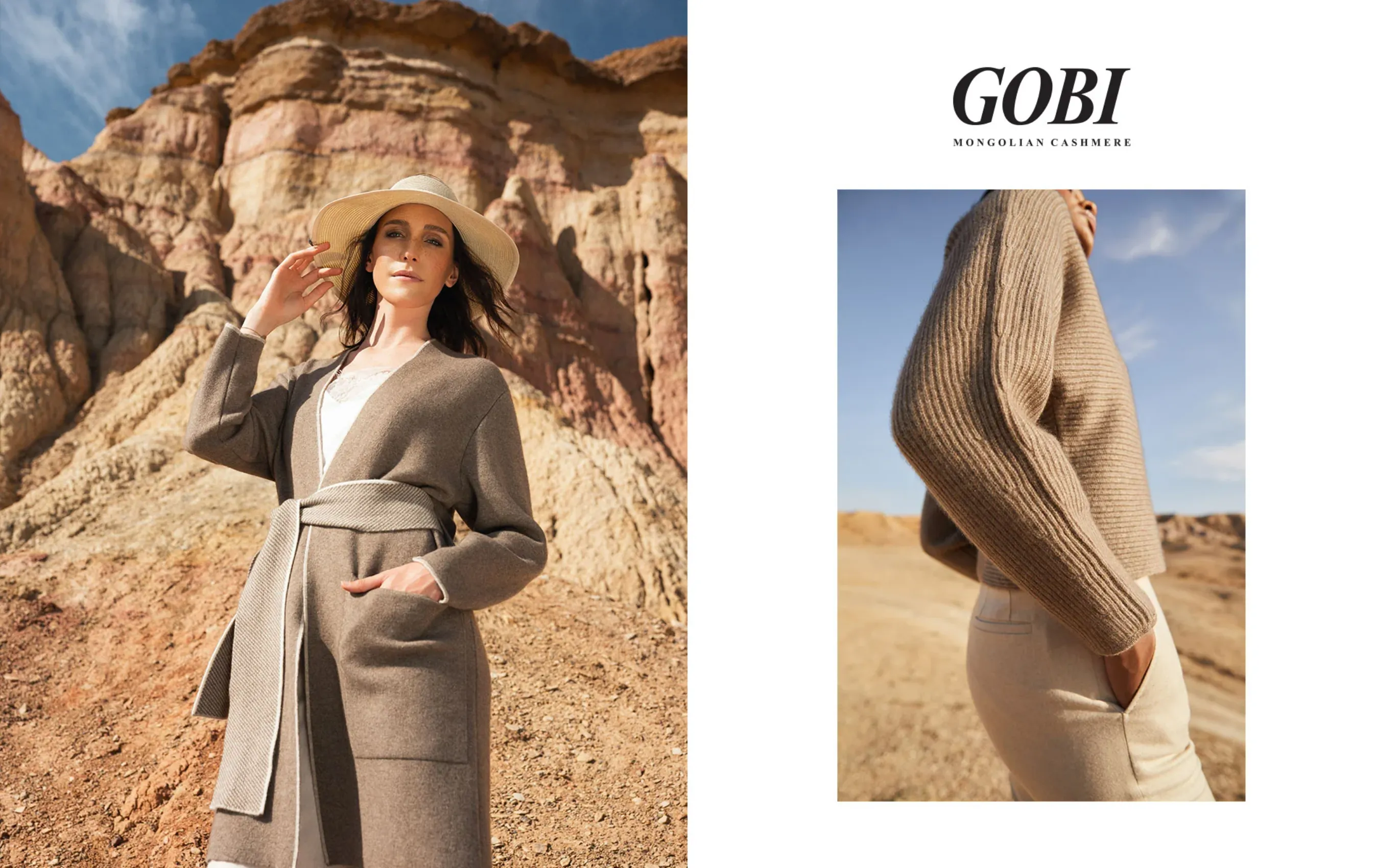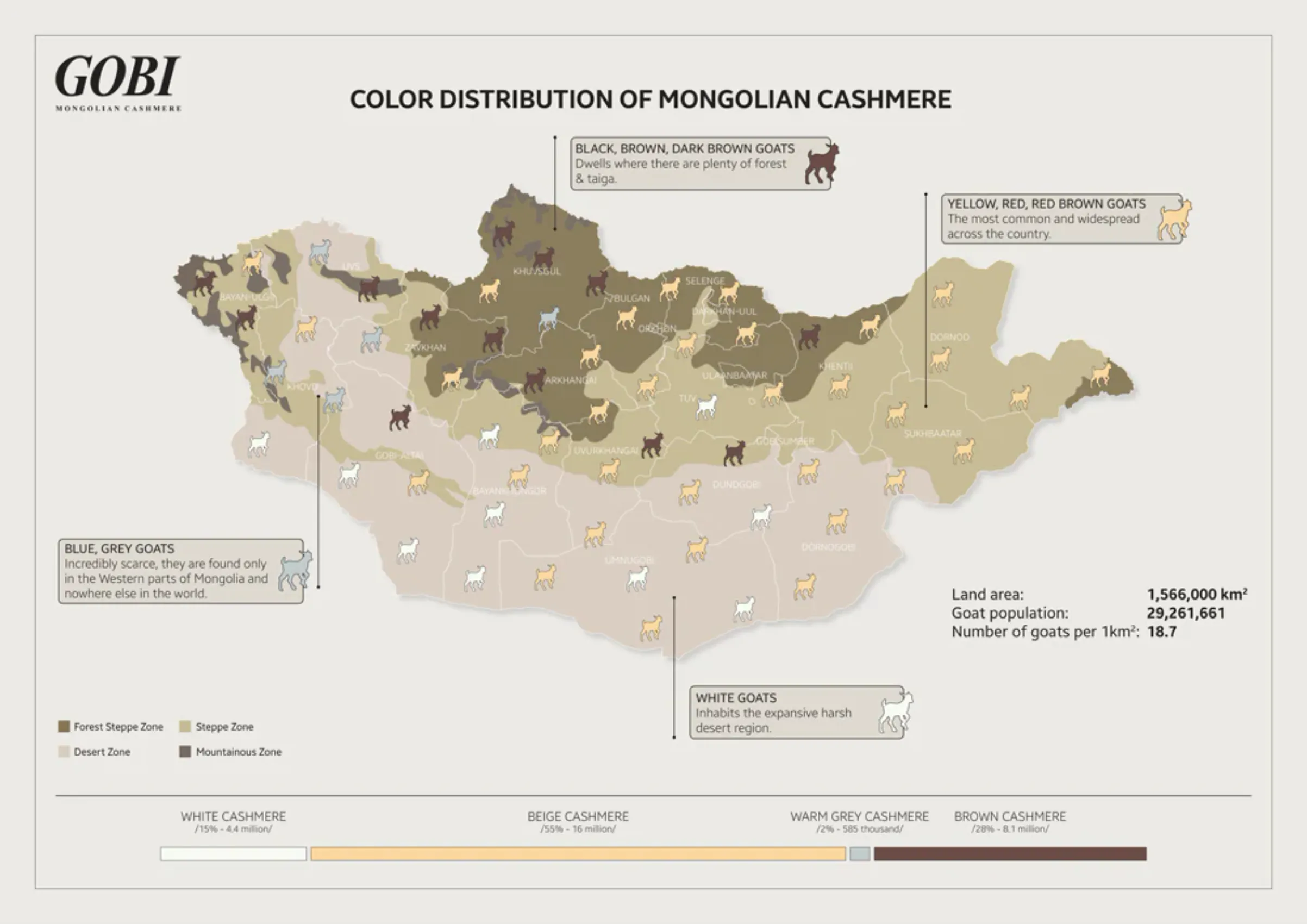Back

Organic cashmere – A new eco-friendly fashion choice
August 4, 2020

Uchral Amar
Director of Design Development Department

Uchral Amar
Director of Design Development Department
With over 10 years at GOBI Cashmere, Uchral has dedicated her career to crafting beautifully designed knitwear. Starting as a textile designer, she later led the design division and now oversees design development as its director. Her deep knowledge of fashion design, combined with years of hands-on experience, allows her to create timeless, high-quality cashmere pieces that blend tradition with modern innovation. She shares expert insights on cashmere fashion, design trends, the creative process behind each garment, and also how to wear, care for, and truly appreciate cashmere.
SHARE THIS
The most premium and top-of-the-line cashmere comes from Mongolia – they’re the softest, most organic and environmentally sustainable natural fiber you’ll ever find in the world.

The most premium and top-of-the-line cashmere comes from Mongolia – they’re the softest, most organic and environmentally sustainable natural fiber you’ll ever find in the world.
The fashion industry is moving toward sustainability and eco-friendly productions as more realize the crucial need to preserve and conserve nature. This is a key focal point for eco-conscious Gobi Cashmere, a leading cashmere producer based in the heart of Asia. The Mongolian-based brand sources its cashmere fibers from a diverse breed of goats spread out in the vast landscape of Mongolia. This ensures Gobi obtains not only the finest fiber for its cashmere products, but also a wider choice of natural colors found nowhere else in the world.
Why should you choose organic cashmere?
Organic cashmere translates to pure, undyed and unbleached fibers. There are many types of cashmere, but not all of them are organic or environmentally sustainable.
The key ingredient for making clothes is water but it doesn’t show up on labels. Surprisingly, it takes 31 liters of water to produce an organic colored cashmere shirt, whereas dyed cashmere shirts require slightly more – 109.5 liters of water to be exact. Even so, both undyed and dyed cashmere are the eco-friendlier options compared to other clothing fabrics such as cotton. It takes a massive 2,700 liters to make a single cotton T-shirt. With this amount of water to make one cotton T-shirt, you could make 87 organic cashmere shirts.
You might be curious as to why so much water is needed to make shirts. Let me break it down for you. After all the fibers are collected in an animal-friendly manner, cashmere production starts with the washing process, which drains about 20 liters of water. Next, the sorting process uses up around 20 milliliters of water, and the final washing stage before knitting requires 11.25 liters of water. This brings up the total water consumption to 31.27 liters for making an untreated cashmere shirt. But when the dying process is involved, an additional 78.22 liters of water are needed to dye and wash the fibers.
It takes three times more water to dye cashmere and this is precisely why you should choose organic cashmere – natural and untreated fibers that are both sustainable and eco-friendly.

You can choose 4 natural colors!
Mongolia has more than 29 million goats inhabiting the sparsely populated country. These goats have coats of 6-8 different shades resulting in the 4 natural colors of cashmere found nowhere else in the world except for Mongolia. This variety of colors depend on the climate and region of the goats’ habitat.
- Pure white goats live out in the scorching hot Gobi Desert where temperatures can soar up to +40oC.
- Black, brown and dark brown goats produce brown colored cashmere. They graze in central and northern Mongolia, where there are plenty of forests.
- Yellow, red and red brown goats are the most common producing beige colored cashmere. They live practically everywhere in the vast steppes of Mongolia.
- Blue and grey goats are incredibly rare. Their warm grey cashmere can only be found in Mongolia making up only 2% of the country’s goat population, sparsely populating the western part.

To survive in Mongolia’s extremely cold and harsh winter, with temperatures dropping to -40°C, goats grow long, fine fibers that protect and keep them warm. Mongolian cashmere fibers stretch up to 38 to 45 millimeters, making them three times longer than others. This is incredible because long fibers mean maximum softness and durability. Other countries have shorter fibers, which increase the chances of your expensive garment pilling and wearing out fast. But as mentioned before, Mongolian goats have longer strands that give your clothes flatter and tighter feel. They’re also less prone to wrinkles!
That’s not all – these valuable fibers average 14 to 16.5 microns in diameter, making them shockingly lightweight and high in elasticity. Simply put, Mongolian cashmere is so light that you hardly feel like you’re wearing anything. It offers natural insulation without the bulk and maximum softness that elevates over time.
If you’re searching for elegant and luxurious pieces that fit your design and are eco-friendly, look no further. Gobi Cashmere has launched a new organic collection on their international website, www.gobicashmere.com! This “Organic Collection 2020” was inspired by the concept of Zen. It promotes sustainable, eco-friendly fashion all the while encouraging people to find peace and calmness within themselves and also in their everyday lives. Interestingly, the most common of the organic colors, beige, itself symbolizes warmth, tranquility and serenity.
You definitely won’t regret buying cashmere products because they are the new eco-friendly fashion choice you’ll grow to love. Cashmere garments and products offer refinement and elegance as well as environmental sustainability. Plus, unlike animal fur or print, you don’t have to worry or be conscious of others as cashmere is harvested in an animal-friendly manner and contains countless eco-friendly values.
Feel good about the cashmere you wear!